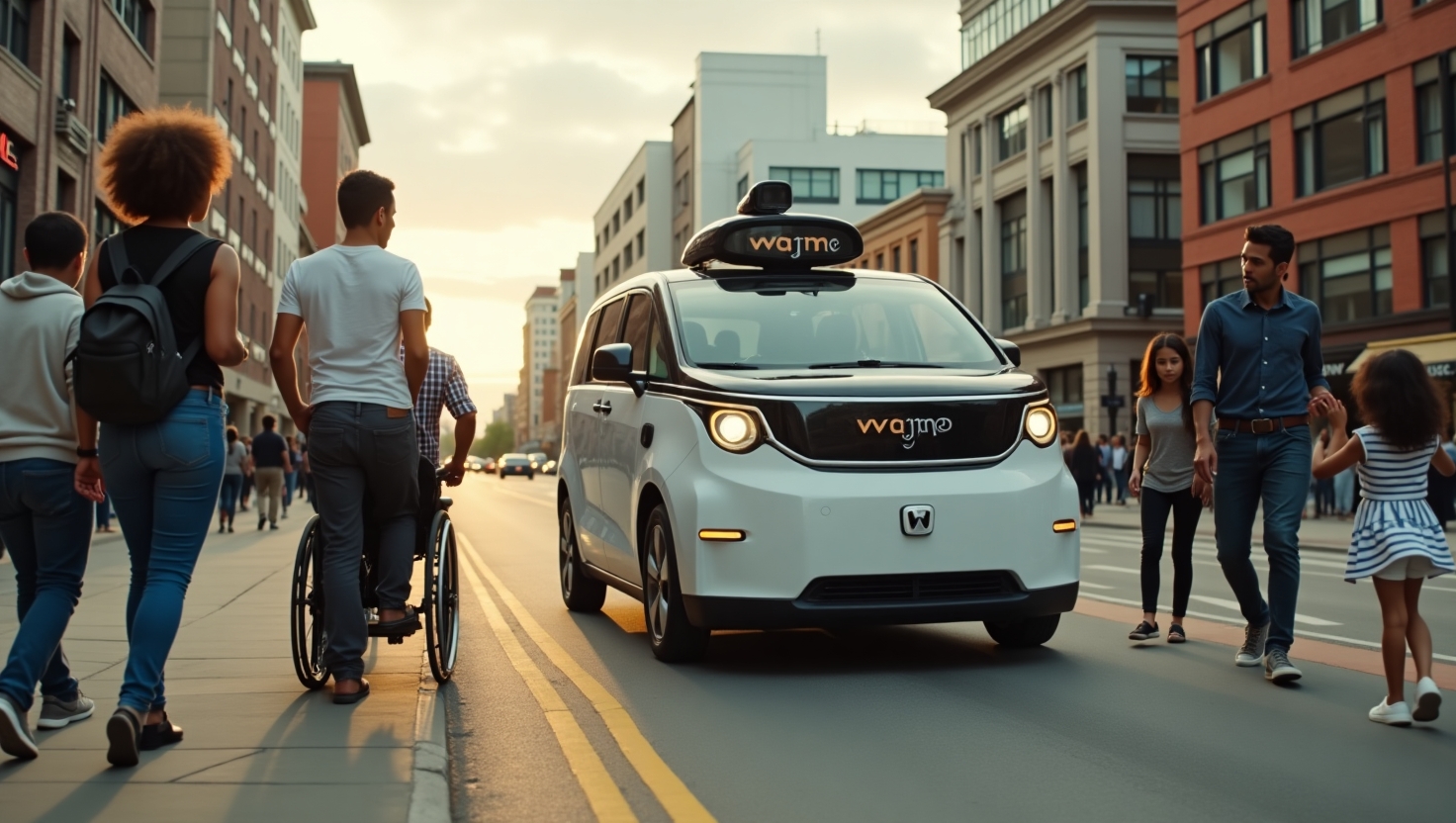Waymo: The Future of Urban Mobility Through Autonomous Taxis
Introduction
Imagine a world where your commute is no longer dictated by public transport schedules, traffic jams, or parking nightmares. This utopian vision of urban mobility is inching closer to reality, thanks to Waymo’s groundbreaking advancements in autonomous taxis. As the brainchild of AI transportation, Waymo is spearheading a revolution that will forever transform our cities and how we navigate them. This is not just another iteration of ride-sharing; it’s an entirely new stratosphere of transportation looming on the horizon. But as this futuristic promise of streamlined urban mobility weaves into our daily lives, are we truly prepared to embrace an era redefined by self-driving cars?
Background
So, what is Waymo? Born out of Google’s mother company, Alphabet Inc., Waymo epitomizes the cutting-edge of autonomous taxi technology. It’s more than just the product of engineers tinkering with algorithms—it’s the flagbearer of an inevitable shift in AI transportation. Efforts that began within Silicon Valley’s tech corridors are now going global, riding on the crest of widespread technological fervor. And soon, London is slated to become Waymo’s next international stop, pending regulatory approvals set for 2026.
Autonomous taxis are not just an incremental update in transportation; they are a paradigm shift. With Waymo already having delivered over 10 million paid rides, the platform’s success offers a tangible indicator of the shifting landscape. While various cities worldwide grapple with infrastructure strain, pollution, and inefficient public transport, Waymo stands ready as an engineer of future-proof solutions. But the big question is, will urban mobility as we know it survive this reinvention unscathed?
Current Trends in Autonomous Taxi Services
The advent of autonomous taxis is less a trend and more a tectonic shift poised to redefine urban areas across the globe. While AI transportation initially faced skepticism, the tide is changing. Regulatory landscapes are evolving rapidly to accommodate innovations like those Waymo offers. This includes cities worldwide recalibrating their infrastructure to fit a burgeoning wave of AI-powered mobility.
Waymo’s monumental success of over 10 million paid rides underscores the ascendency of this technology. It’s not just a promising ideal; it’s a proven reality. Furthermore, the success stories are not relegated to the U.S. alone. With autonomous taxis already a daily sight in several American and Japanese cities, it begs the question—is London truly ready for this leap into futuristic transport, or will the UK capital encounter unprecedented delays and pitfalls?
Insights from Waymo’s London Expansion
Waymo’s expansion into London isn’t a mere geographical move but an intelligent deployment strategy. By partnering with local stalwarts like Nihon Kotsu and even ride-sharing giants like Uber, Waymo ensures operational efficacy and cultural integration. Such alliances strive to cut through the regulatory red tape, but they are not without challenges. Public acceptance of self-driving cars remains an emotional and regulatory hurdle.
One must not overlook the comparative analytics concerning Waymo’s rivals in the landscape of urban mobility. With local competitors such as Moove introducing flexible leasing options for drivers and Uber already enjoying a stronghold, Waymo’s adventure into the UK’s transport psyche promises intrigue, competition, and perhaps, radical redefinition.
Future Forecast for Autonomous Taxis
The future is bright yet complex for autonomous taxi services. With countries like the UK accelerating legislation aimed at freeing up the roads for AI-driven vehicles, a domino effect is inevitable. As governments ramp up for this new era, it’s imperative to consider how technological advancements and necessary infrastructure boosts can facilitate seamless integration.
Waymo’s presence in London could be a bellwether for subsequent global expansion. Advances in machine learning, sensor technology, and urban planning may very well render traditional taxi services a relic of the past. The pertinent question remains—how well will governmental bodies and public opinions align to permit this metamorphosis?
Call to Action
As Waymo continues to chart previously unimagined territories, the onus is on us, the consumers, to remain informed. The compelling possibilities of autonomous taxis transcend mere convenience, suggesting a full-blown evolution of urban landscapes. It’s time we all sit up, take notice, and perhaps even brace ourselves for choices that will alter our travel habits forever. Are we ready to elevate our cities through AI transportation or are we destined to lag behind in the nostalgia of inefficiency?
For those keen on a deeper dive, further insights can be gained from Waymo’s ambitious international timeline and real-world implications here.
Stay informed, stay curious, and brace for a future where urban mobility gets smarter, swifter, and undeniably, more autonomous.
